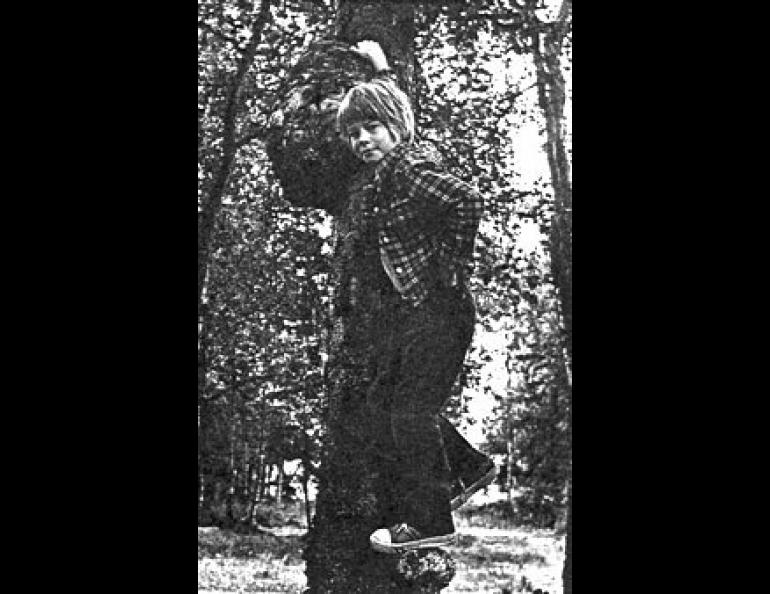
Burls
Burls, spherical woody growths on the trunks of spruce, birch and other trees, are commonly found throughout wooded parts of Alaska. Many are removed from trees and used for furniture making and for decorative roof or mailbox supports or just to set out in the yard as curiosities.
A burl begins life as a gall--a tumor on plant tissue caused by stimulation by fungi, insects, or bacteria. Evidently, only slight irritation to the bark causes a gall. The gall grows to become a burl--a massive, hemispherical or subglobose structure, sometimes very large in size. Once started, the burl grows with the tree, each year building a new growth ring that can be traced along to an unaffected part of the tree where it there appears as a normal growth ring. The growth rings inside the burl are spaced farther apart than the same rings elsewhere on the tree, showing that growth has proceeded most rapidly within the burl. Since the hardness of the wood is related to the rate of growth, the wood inside a rapidly growing burl is softer than the wood elsewhere in the tree. Nevertheless, it is hard enough to be sanded and finished into an attractive surface.
An affected tree may grow a single burl or many; trees with multiple burls on both trunk and limbs have been found. Trees with burls seem to be found in a cluster; if one tree in an area has burls, it is likely that other trees around it has them too. This clumping is suggestive of leafhoppers or aphids transmitting the disease, but no conclusive evidence of this is known yet. Burls weaken trees but do not kill them. The weakening effect, however, makes the trees vulnerable to other diseases which can kill them.
Relatively little is known about burls, for several reasons: It takes a long time for a burl to grow--nearly as long as the tree on which it is found--so research is stretched out over a long period of time. Furthermore there is as yet no major economic reason to learn about burls. Burls do not kill trees nor do they affect a great number of trees, so there is no real need to control their spreading. If burls were eliminated it would mean the end of the small industry that uses them for arts and crafts purposes.





